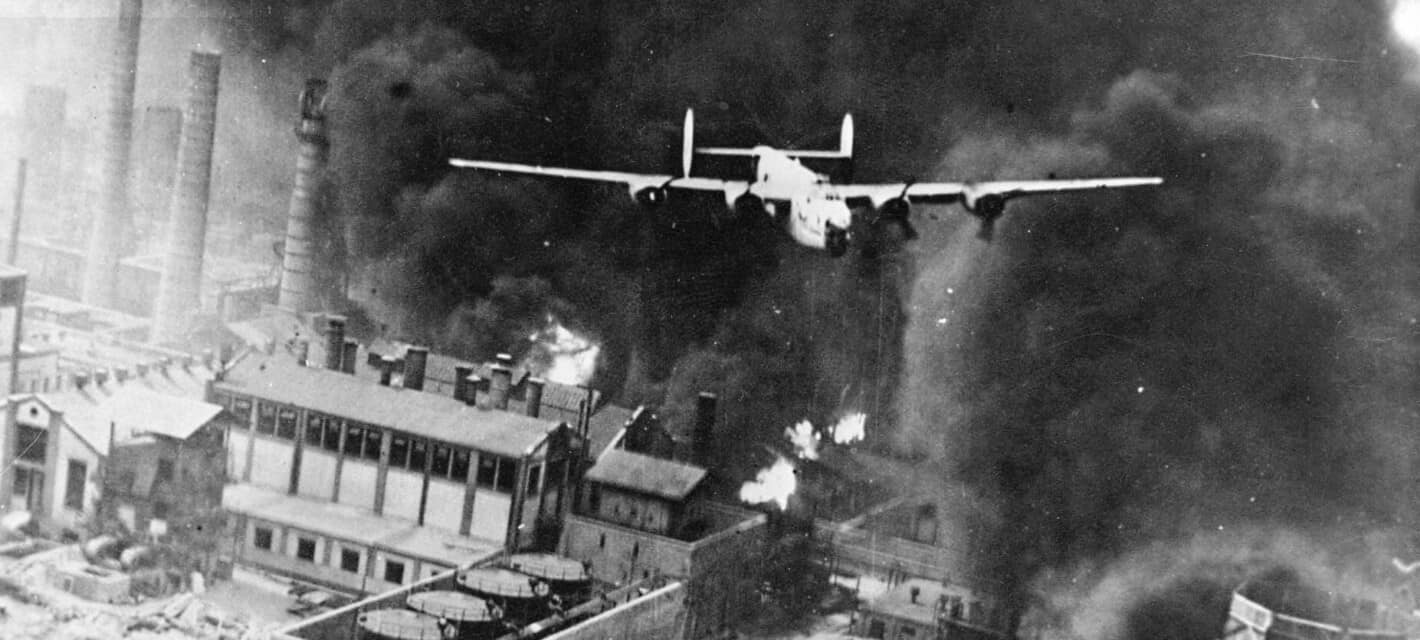In 1943, an RAF raid was mounted to troll the Nazis and disrupt the commemoration of their tenth anniversary in power. German bigwigs were scheduled to give live speeches in Berlin that were to be broadcast throughout the Third Reich and Nazi-occupied Europe that day. So attacks were timed to force the speakers to orate live on radio, with the din of combat in the background. Following are thirty things about that and other fascinating aerial missions from history.

30. The Grim Tenth Anniversary of Hitler’s Rise to Power
January 30th, 1943, was a grim day in Berlin and throughout Germany. World War II, which had started off so promisingly for the Germans, had taken a decidedly bleak turn for the worse. Gone were the heady days of the blitzkrieg when Panzers rolled like unstoppable juggernauts across much of Europe, accompanied by the terrible drone of Luftwaffe bombers and the banshee shrieks of Stukas. Victory parades through conquered enemy capitals, like the march past the Arc de Triomphe in Paris, had already begun to fade into distant memories. Now, on a date that marked the tenth anniversary of the Nazis’ rise to power, bleak news crowded in from all directions.
In North Africa, Erwin Rommel’s vaunted Afrika Korps and its Italian allies were in headlong retreat after defeat at El Alamein. Now, the hunt was on with the British on the chase, and the Desert Fox was about to go to ground in Tunisia. On the Eastern Front, the encircled German 6th Army at Stalingrad was on its last legs, and its final collapse was expected at any moment. So 1943’s January 30th celebrations were intended to buck up morale. Reichsmarschall Hermann Goering, Hitler’s chief deputy and head of the Luftwaffe, planned to kick off the ceremonies with an address that was to be broadcast live throughout the Third Reich. Allied intelligence found out about the speech’s scheduled start time, and the British Royal Air Force decided to drop in for a visit.

